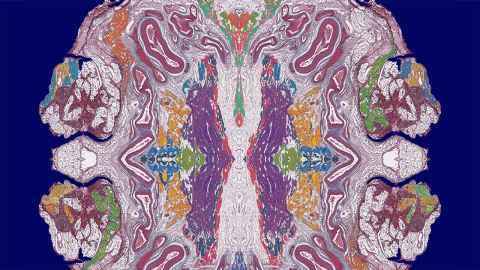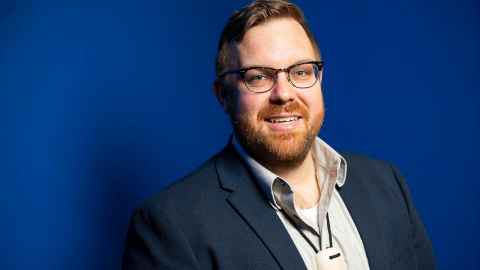Both the art and science of the gut feature as cover story
20 April 2022
Research from the Auckland Bioengineering Institute to feature on the latest cover of the American Journal of Physiology – Gastrointestinal and Liver Physiology was illustrated with the artwork of one of the lead authors of the paper.

The research, led by PhD student Zahra Aghababaie and her supervisor Dr Tim Angeli-Gordon, demonstrates a new technique for the potential treatment of disorders of gastric function – ablation therapy, which is usually used to correct an abnormally beating heart.
Zahra created the artwork used on the cover of the journal from some of her histology (microscopic) images of the gastrointestinal system, which she captioned as the “Enchanted Forest of the gut-brain”.
“Within the human stomach, a great wild and vivid ‘forest’ exists working in harmony through sequences of organised contractions to extract the essential source of energy,” she writes. “The coordination of this wonderful machinery is only possible thanks to an assembly of dedicated cells orchestrating the ballet of digestion. However, sometimes the harmony of this delicate system is disturbed with abnormal dysrhythmic activity.”
In normal circumstances the stomach is coordinated by underlying bioelectrical “slow wave” activity, which coordinates the contraction of the muscles that mix and move contents into and through the gastrointestinal (GI) tract.
When these electrical slow waves don’t work as they normally should, described as ‘stomach dysrhythmias’, it can lead to severe GI disorders and symptoms of nausea, vomiting, pain and bloating.
When dysrhythmic activity occurs in the heart, it results in irregular heartbeat, and a condition called atrial fibrillation. This is often treated with ablation therapy, the precise ‘burning’ of tissue to control the naturally occurring electricity in the heart.
As the ABI researchers have demonstrated, the technique could also be applied to control the underlying bioelectrical “slow wave” activity in the stomach.

Last year the team published the initial results of their research performing ablation in the stomach, demonstrating that it was possible to use ablation to block the electrical activation of the stomach in localised regions.
“The more recent paper builds on that foundational work, where we have targeted ablation to inhibit specific sites of electrical activation in the stomach,” says Dr Angeli-Gordon.
“This is an important advance because we have now shown that we can eliminate abnormal electrical activation with ablation, and also that the normal electrical activation of the stomach can be restored after ablation.
“Although these studies were done in our pre-clinical lab, they demonstrate the powerful potential of ablation in the stomach which may now be able to be translated as a therapy for patients suffering from gastrointestinal disorders."
Zahra's artwork was initially created as a submission to the Art of BioEng, a competition that the ABI had held since 2015 to encourage the Institute’s bioengineers to capture, through art, the world that new technologies have allowed us to see that is often beyond our imagination.
For her submission she drew on the comic book style that she often drew and painted when she was at school.
“And knowing that there are many comic book fans at the ABI, I thought that style of illustration would be a fun way to capture my research.
“Biology imaging is both beautiful and enchanting,” she says. She has always enjoyed art. “We are working in a cross-disciplinary field at the ABI - engineering, biology, physics and so on. I think art can give us a moment of peace, a moment to stop, observe and appreciate. And perhaps remind us to do this more often in our everyday life and work, and in our case, our research.”
The team’s paper is available online in the American Journal of Physiology.
Media contact
Margo White I Media adviser
Mob 021 926 408
Email margo.white@auckland.ac.nz